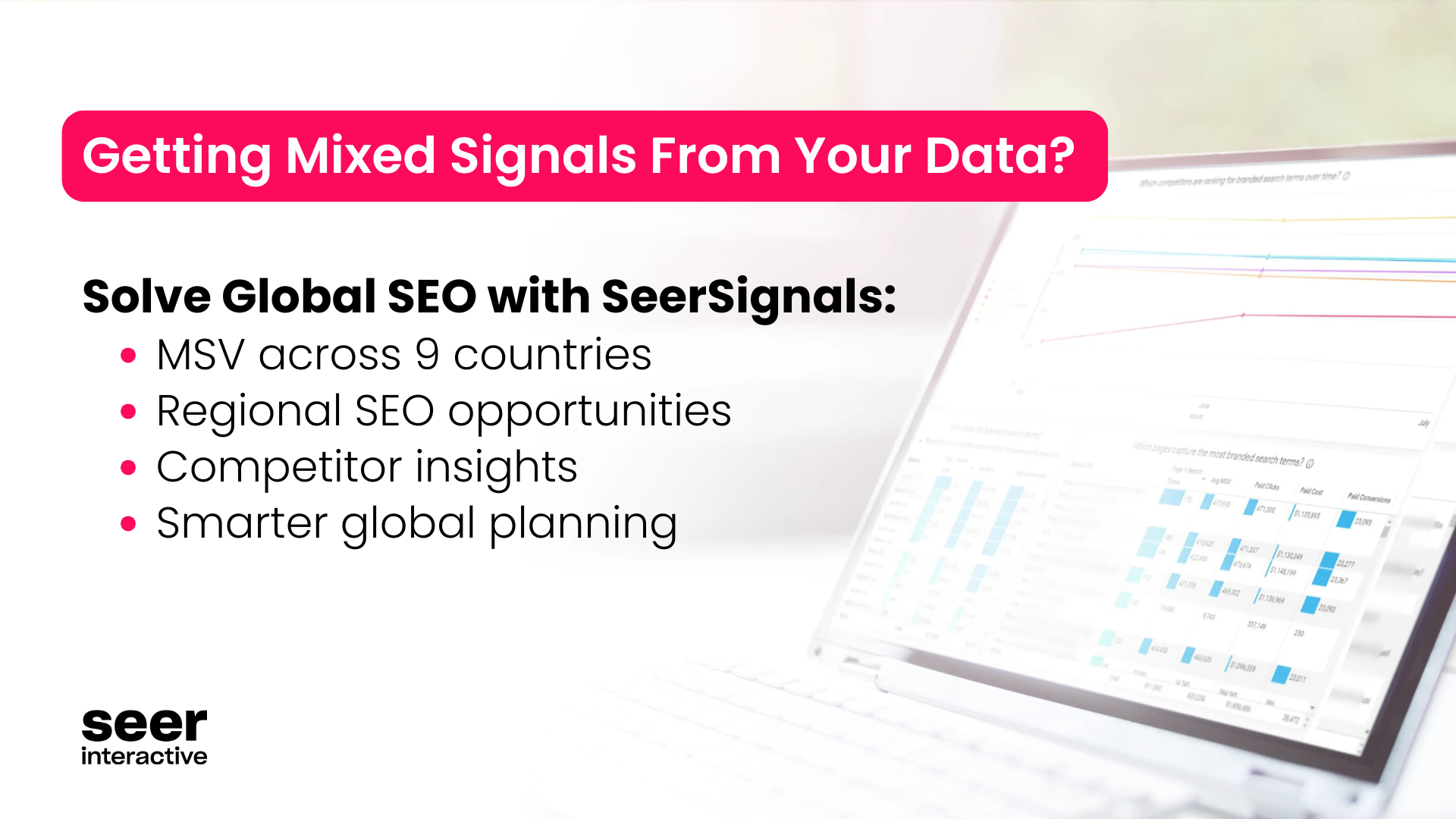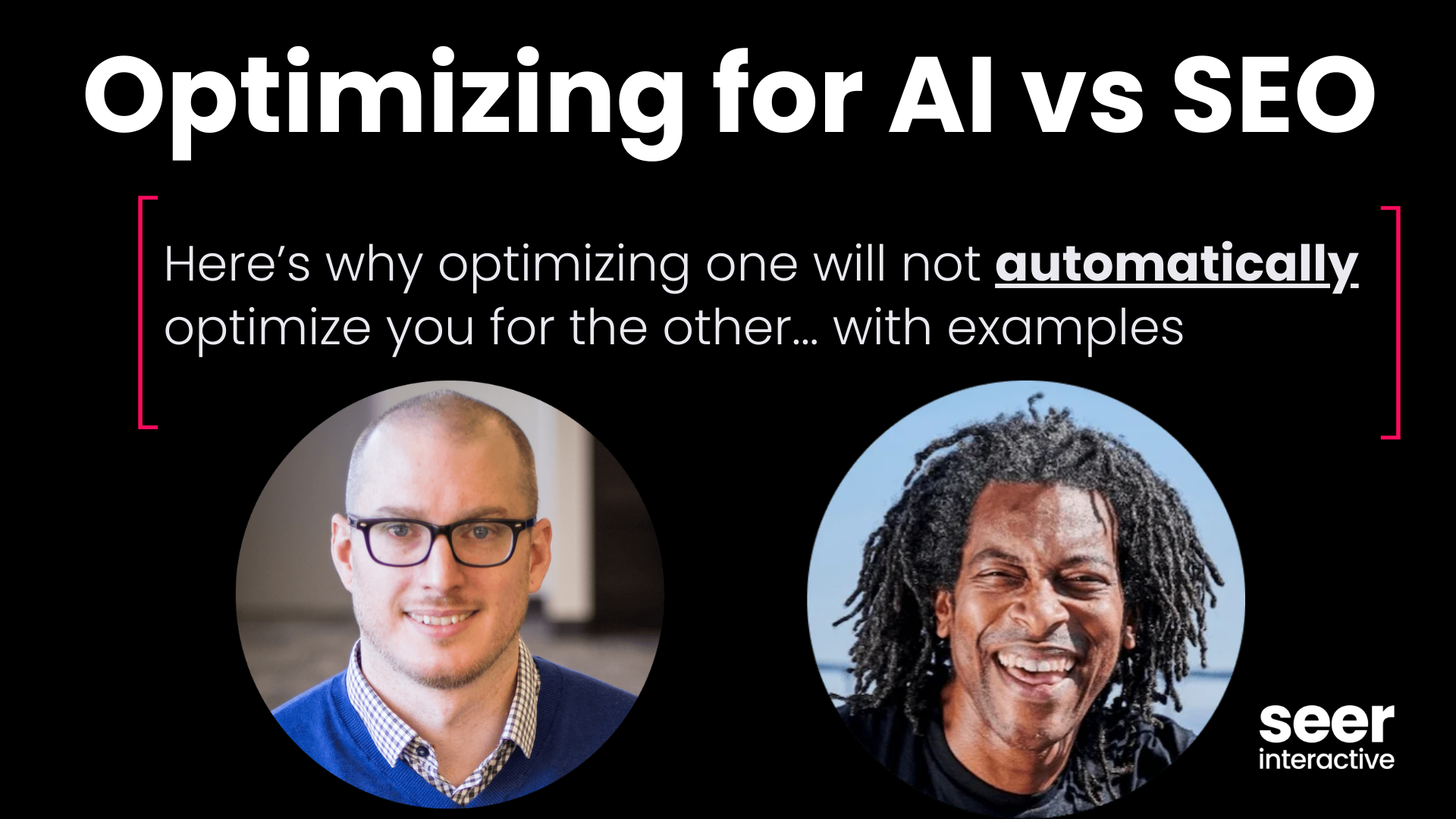Organic Performance isn’t JUST SEO
Has this ever happened to you?
All your organic leading indicators look good - your organic visibility is strong and your rankings haven’t fluctuated - but, for some reason lagging indicators like traffic, conversions, revenue, etc. have declined.
If you’re in digital marketing, you can probably relate. And you’re probably familiar with the fact finding mission that comes after this realization.
Why did organic performance decline?
This question can open up pandora’s box, but in this guide we’ll outline 3 ways to leverage Google Trends to not only understand past performance, but how you can utilize this free tool proactively in your marketing strategy.
How to Use Google Trends for SEO & Content Marketing
How Does Google Trends Work?
Google Trends collects and analyzes the popularity of the most frequently Googled search queries. With it you can see the changes in interest in a topic or query over time. Please note that Google Trends does not show Search Volume (check out Keyword Planner for that), but represents relative search interest with 100% being the most interest and 0% being the least.
Recognizing Seasonality
In a perfect world, we would all have flawless Google Analytics (or Adobe Analytics) data that dates back to the beginning of time that can help us identify seasonal patterns. Unfortunately, this is hardly ever the case. Instead our data is often muddled with the impact of migrations, tracking issues, or some other factor that doesn’t help us understand the seasonal behavior of our target audience.
With cases like these, Google Trends can help identify seasonal patterns to help explain organic traffic behavior.
Let’s say your brand sells engagement rings. Does this industry experience seasonality? Probably. Using Google Trends you don’t have to trust your gut. Instead, you can look at a lookback window of 5 years to see how the interest in engagement rings has fluctuated over time.
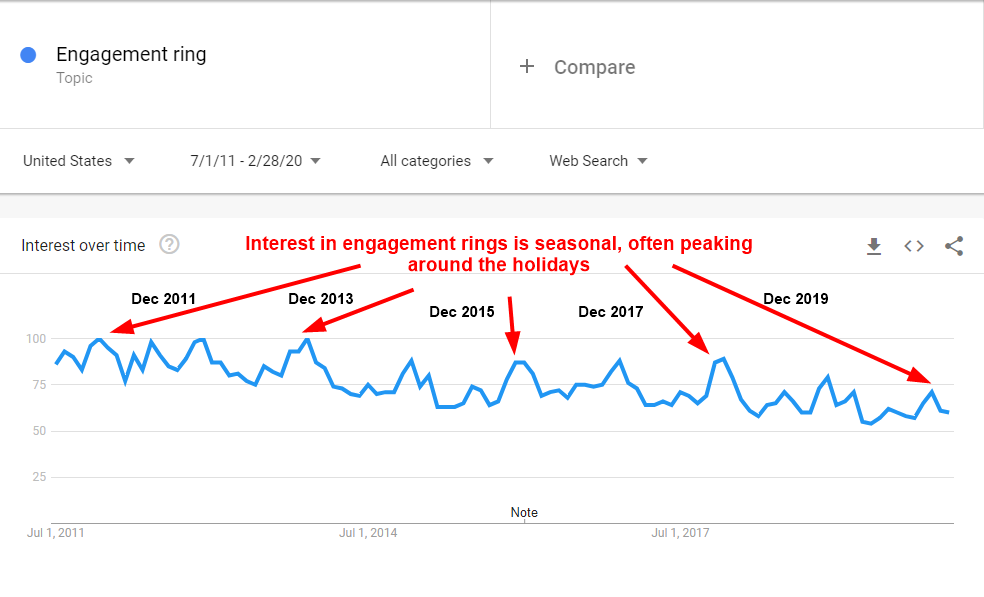
How to use this information:
- Incorporate seasonality into your goals to make them more realistic (i.e. create goals that expect December to outperform January and not the opposite)
- Understand why organic traffic has increased between November and December, or decreased between December and January
Understanding Brand Interest
When branded traffic is down year-over-year or month-over-month but organic visibility has not fluctuatuated, this may indicate a decrease in either brand demand or brand awareness. By leveraging Google Trends, you can quickly understand if interest in your brand has changed.
To complete this exercise, navigate to the “search term or topic” search bar and begin typing in your company name. Google trends will auto suggest options available for that company name. If available, select the option that relates most to your business.
Let’s say you’re Department Store J.C. Penney and trying to understand why organic traffic has decreased for branded terms year-over-year.
First you’ll need to navigate to J.C. Penney within Google Trends. Make sure to select the most relevant category for your query! For J.C. Penney we’ll be selecting the “Department store company” option.
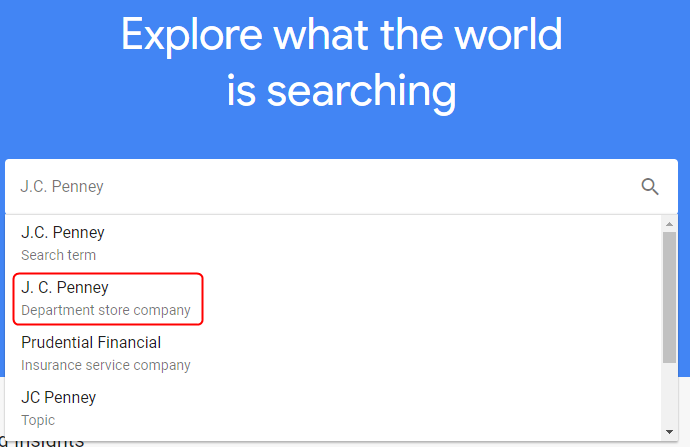
Then, navigate to the time period you want to look at. In this case, we want to understand year-over-year brand interest, so we captured the interest from 8/1/2019 - 8/31/2020 (13 months).
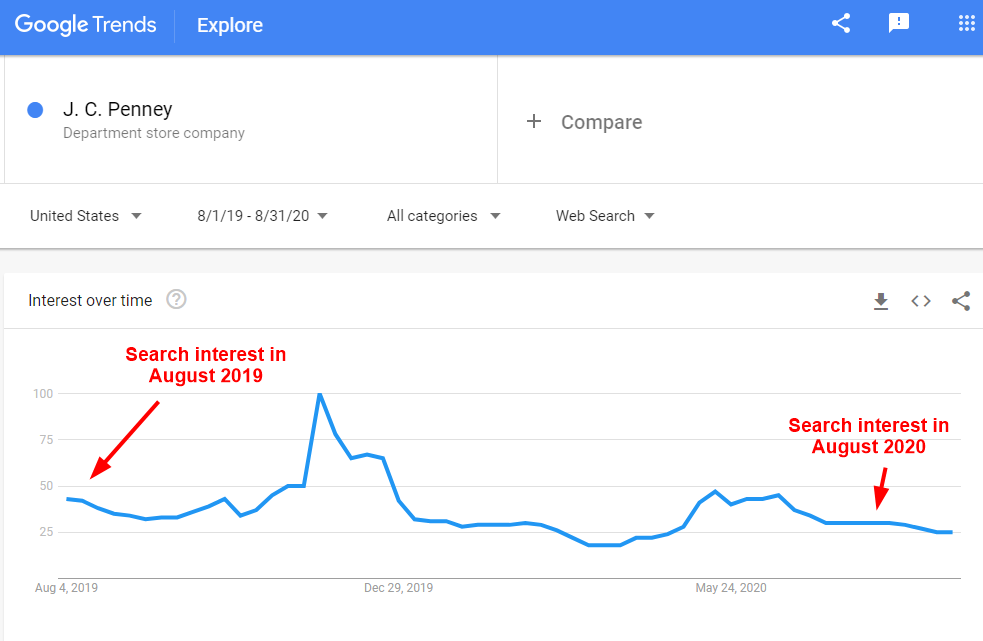
You confirm interest is down year-over-year, what can you do with this information?
- Whatever you do, don’t stop here - look into why search interest is declining. Is it related to the pandemic? Is there a lack of brand awareness for the brand?
Identifying Emerging Trends
Although Google Trends cannot predict the future it can identify searches that are rising in popularity. Digging into rising trends can help you understand the types of content that will resonate most with your target audience in real-time.
Let’s say you’re a fashion e-tailer and you want to explore rising queries in the United States for “Fashion.” The two areas to pay close attention to will be the “Related Topics” and “Related Queries” tables.
Related Topics will show you the topics that are rising in popularity related to fashion.
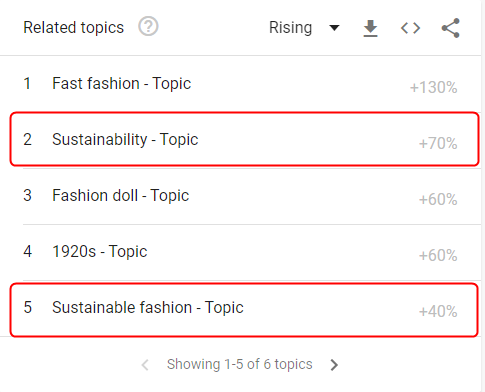
How can you use this information?
- Understanding that sustainable fashion is a rising trend in the United States, if you offer sustainable fashion - then it may be worth testing incorporating this language on your site.
Related Queries will show you the queries that are rising in popularity related to fashion.
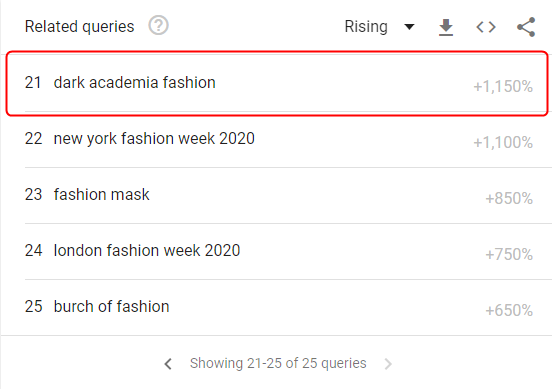
How can you use this information?
- In this case, you may want to dig into “dark academia fashion.” What does that mean? Does your business carry “dark academia fashion” pieces!?
- It might be time to investigate if this is an area you want to promote on your site.
Also, in case you were wondering...

Start. Stop. Keep.
Start leveraging Google Trends to better understand organic performance and what influences it outside of your SEO strategy.
Stop trusting assumptions rather than data to inform your marketing strategy.
Keep following the Seer blog for important updates and strategies to help use data rather than your gut to guide marketing decisions.


